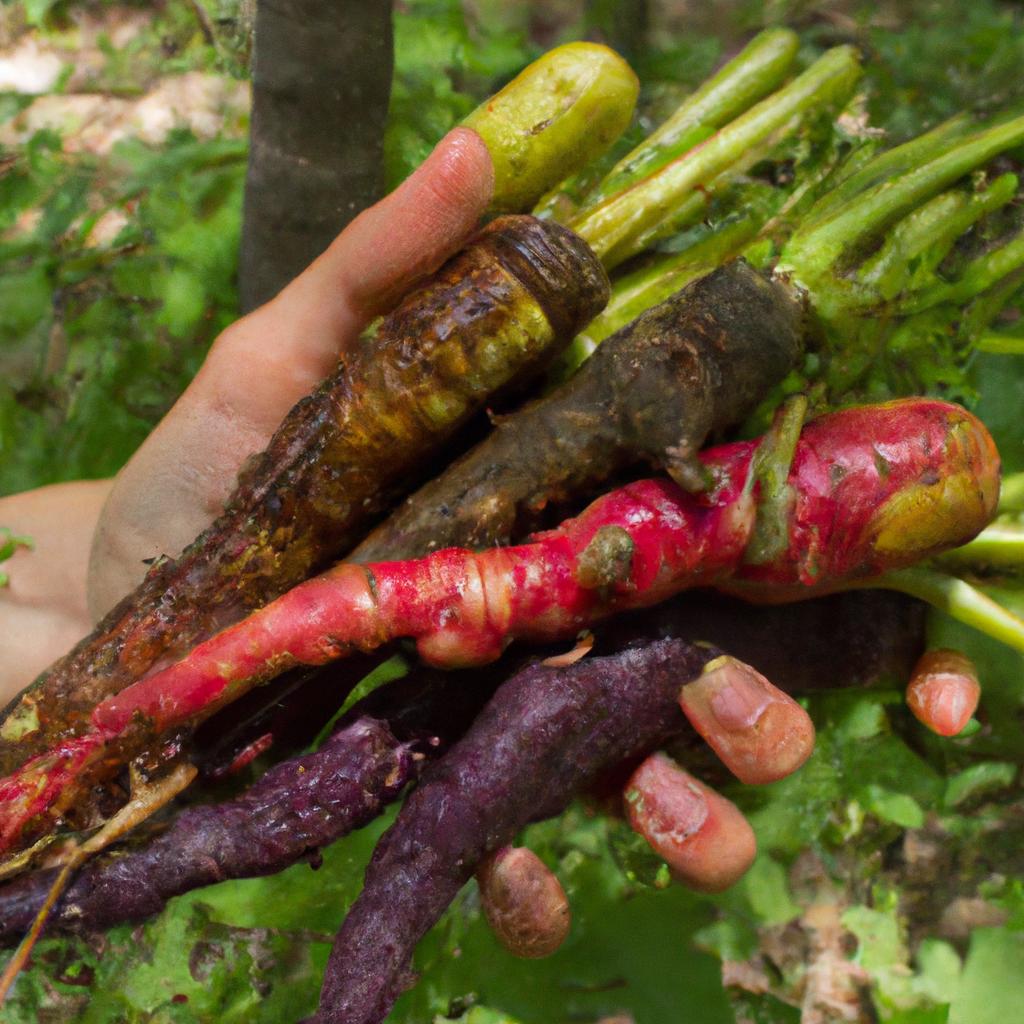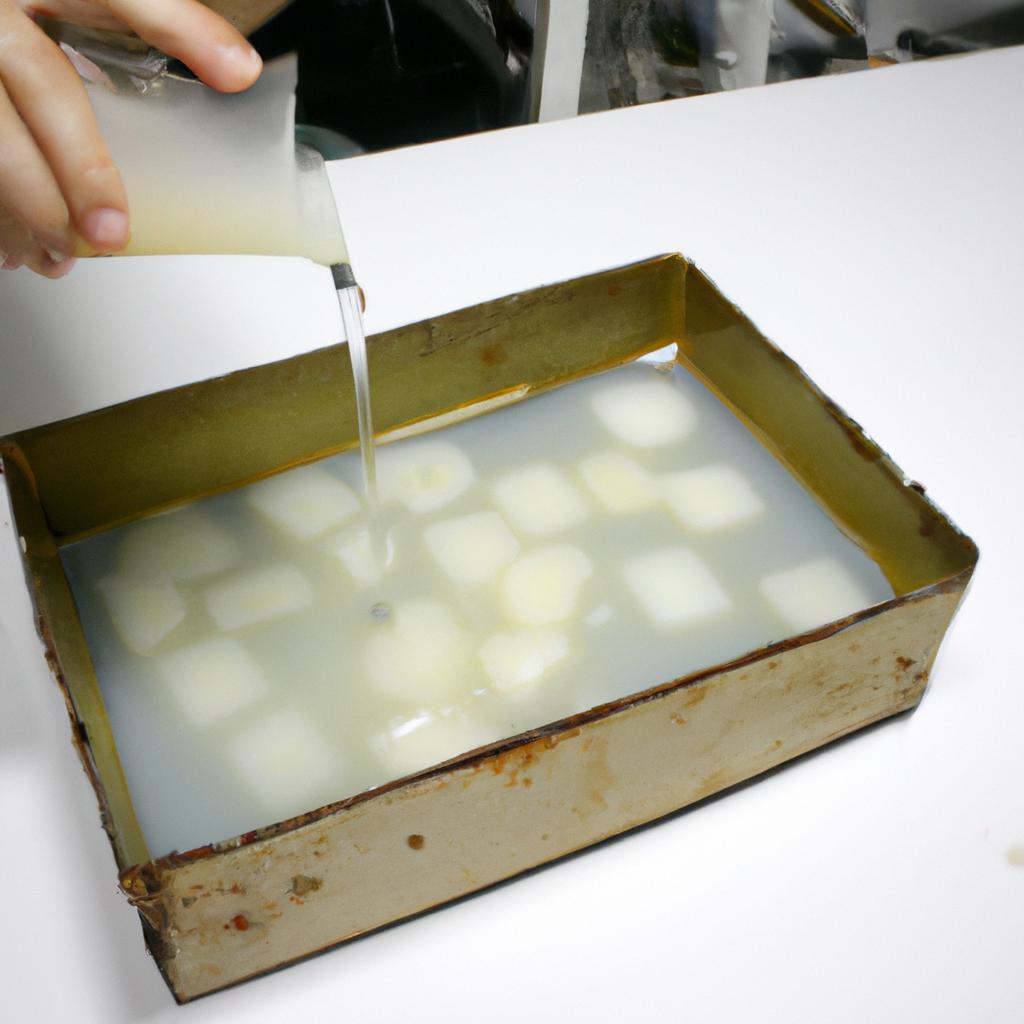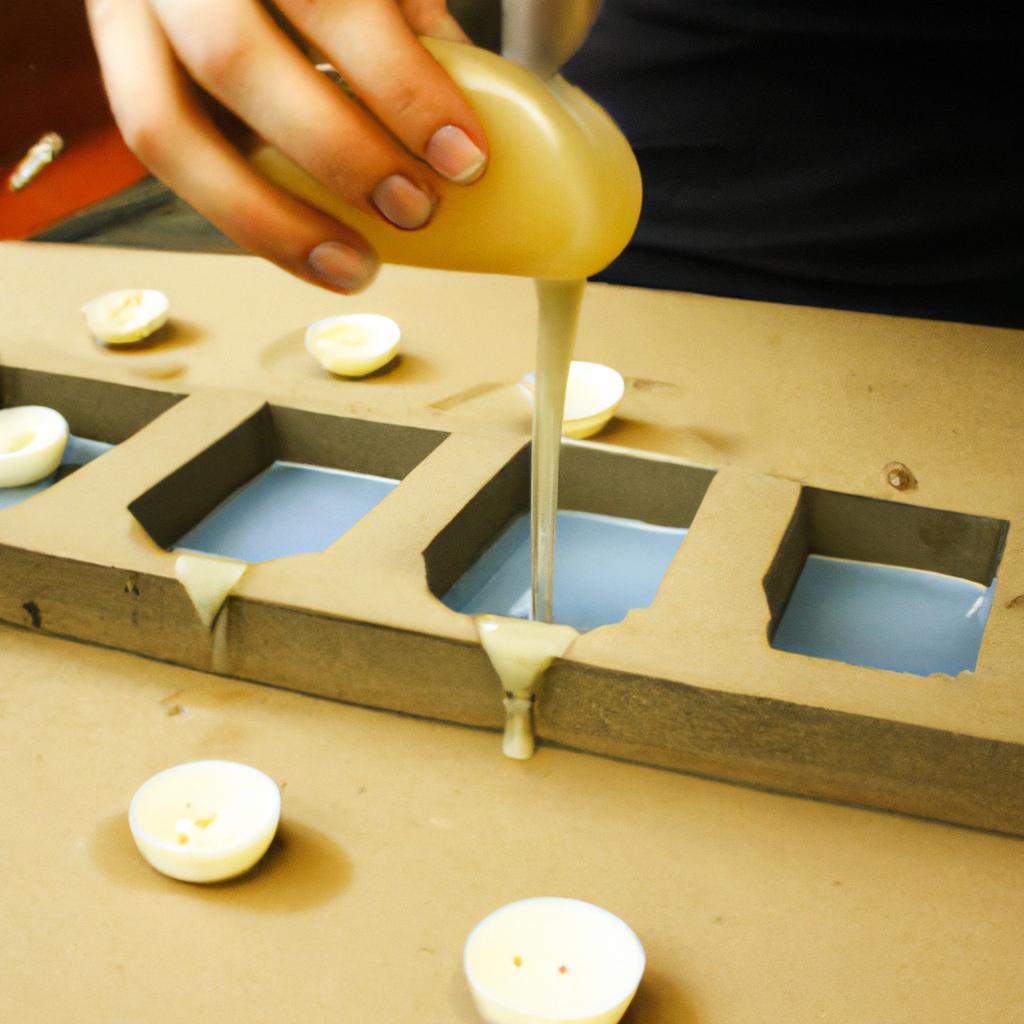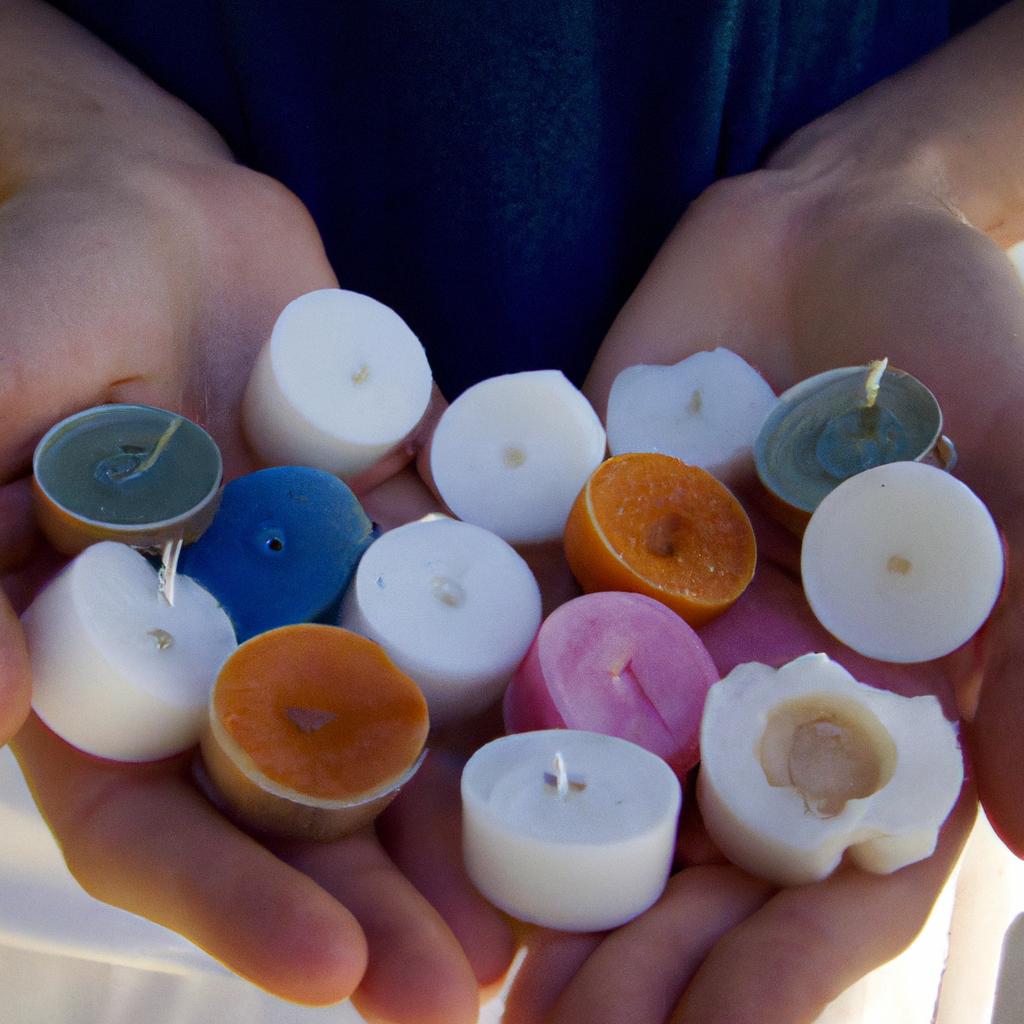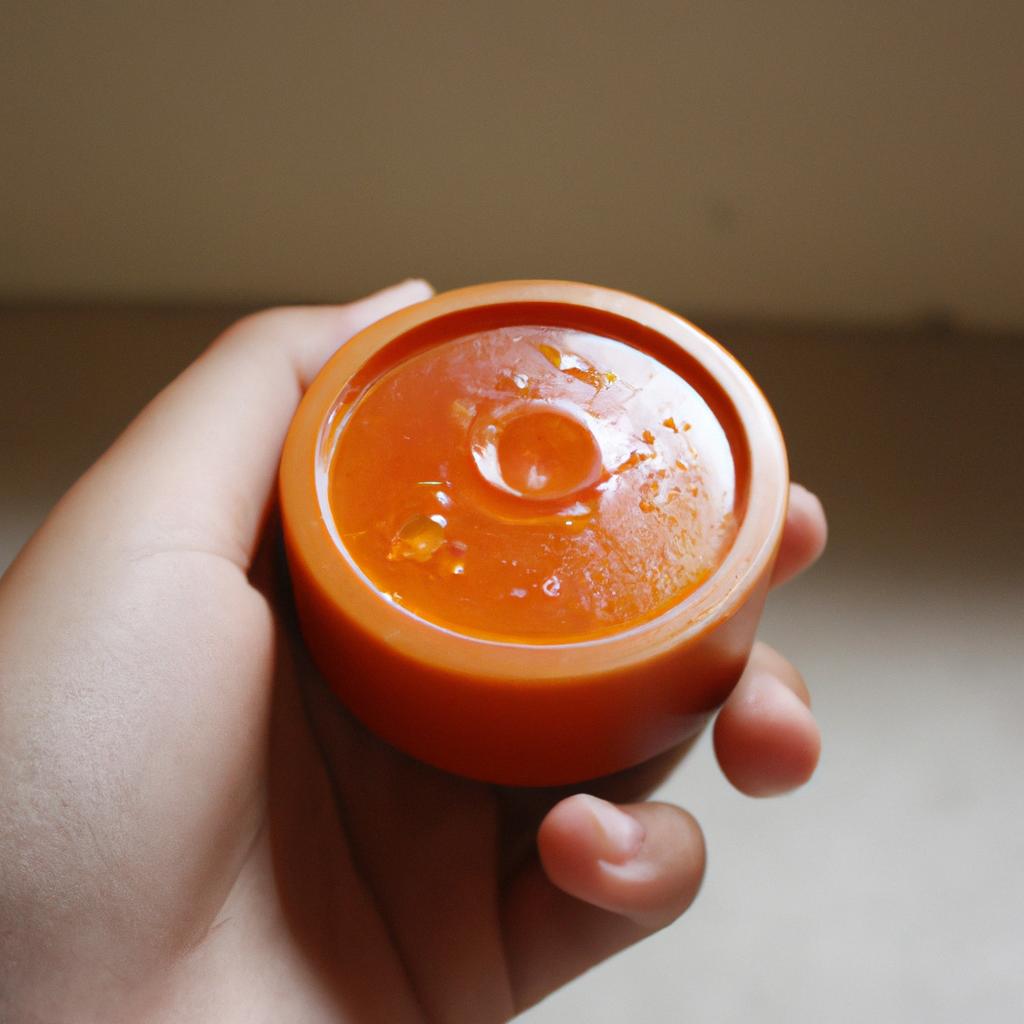Paraffin Wax: Types of Wax in Candle Making
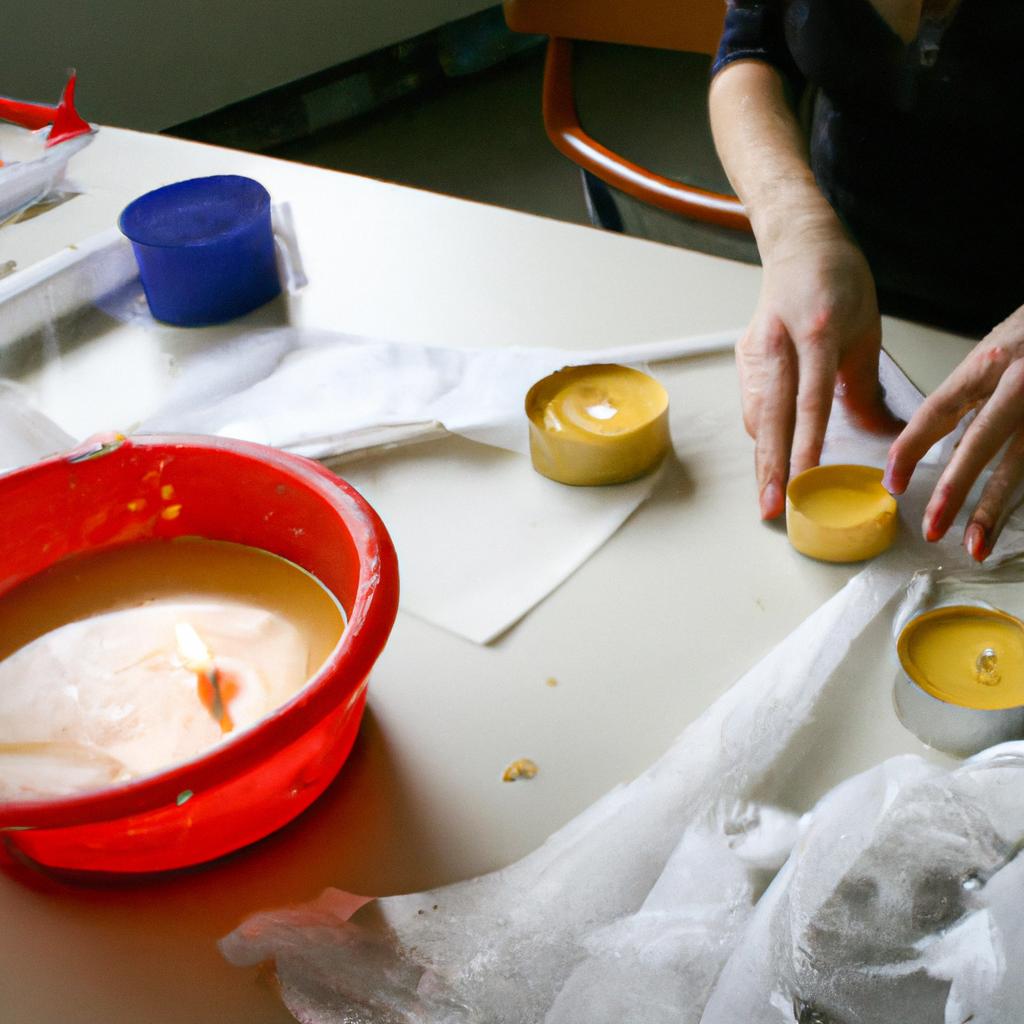
Paraffin wax is a widely used material in the production of candles, valued for its versatility and ease of use. Candle makers have access to various types of paraffin waxes that differ in characteristics such as melting point, scent throw, and appearance. Understanding the different types of paraffin wax available can greatly enhance the candle making process by allowing artisans to create candles with specific qualities tailored to their desired aesthetic or functional purposes.
For instance, consider a hypothetical case study involving a boutique candle maker looking to expand their product line. By experimenting with different types of paraffin wax, they could develop unique candles with varying textures, colors, and burn times to cater to different customer preferences. This example underscores the importance of comprehending the distinctions between paraffin waxes and harnessing this knowledge effectively in candle making endeavors. Thus, it becomes imperative for candle makers to delve deeper into understanding the diverse range of options within the realm of paraffin wax in order to maximize creative potential and meet consumer demands.
Soy Wax
Soy wax is a popular type of wax used in candle making due to its natural origins and clean-burning properties. It is derived from soybean oil, which makes it an eco-friendly alternative to traditional paraffin waxes.
To highlight the benefits of using soy wax, let’s consider the case study of a small-scale candle maker named Sarah. Sarah decided to switch from using paraffin wax to soy wax for her handmade candles after learning about the environmental impacts associated with paraffin production. This change not only aligned with her personal values but also appealed to her target market who sought sustainable products.
One compelling aspect of soy wax is its versatility in fragrance retention. The use of high-quality fragrances can enhance the sensory experience when burning a candle, creating a pleasant atmosphere. Additionally, soy wax has a lower melting point compared to other waxes, allowing for longer burn times and efficient utilization of the product.
Here are some key reasons why many people prefer soy wax:
- Eco-Friendly: Soy wax is biodegradable and renewable since it comes from a plant source.
- Cleaner Burning: Soy wax produces minimal soot, reducing air pollution indoors.
- Non-Toxic: Unlike certain types of waxes that may release harmful chemicals when burned, soy wax emits negligible toxins during combustion.
- Easy Cleanup: Spills or drips from candles made with soy wax can be easily cleaned up with soap and water.
| Key Benefits | |
|---|---|
| Eco-Friendly | ✔️ |
| Clean Burning | ✔️ |
| Non-Toxic | ✔️ |
| Easy Cleanup | ✔️ |
In summary, choosing soy wax as a preferred option offers numerous advantages over traditional alternatives like paraffin. Its sustainability features combined with superior performance make it an excellent choice for environmentally conscious individuals looking for high-quality candles. In the following section, we will explore another type of wax used in candle making: beeswax.
Beeswax
Paraffin Wax: Types of Wax in Candle Making
Soy wax has been widely recognized for its eco-friendly properties and clean burning qualities. However, it is not the only option available to candle makers. Another popular choice is beeswax, known for its natural scent and long burn time. Let us now explore the characteristics of paraffin wax, which is yet another commonly used type of wax in candle making.
To illustrate the versatility of paraffin wax, consider a hypothetical scenario where a small-scale artisanal candle maker decides to experiment with different waxes for their upcoming collection. They use paraffin wax as one of the options and observe that it offers several unique advantages over other types of wax.
Firstly, paraffin wax provides excellent fragrance retention capabilities. Its ability to hold onto scents allows candles made from this material to release a strong and consistent aroma when burned. Additionally, paraffin wax has a lower melting point compared to other waxes like beeswax or soy wax. This characteristic makes it easier to work with during the candle-making process.
In terms of cost-effectiveness, paraffin wax stands out among its counterparts. It is generally more affordable than soy or beeswax, making it an attractive option for commercial production where large quantities are required. Moreover, due to its high availability and wide range of formulations, manufacturers can easily customize the texture and color of paraffin wax candles according to consumer preferences.
Emotional Bullet Point List
- Paraffin wax offers exceptional fragrance retention.
- The lower melting point of paraffin wax simplifies the candle-making process.
- Paraffin wax is a cost-effective choice for commercial production.
- Manufacturers can customize the texture and color of paraffin wax candles easily.
| Advantages |
|---|
| Excellent fragrance retention |
In conclusion, paraffin wax presents candle makers with a versatile option that combines fragrance retention, ease of use, cost-effectiveness, and customization possibilities. Its popularity stems from these unique characteristics that cater to both artisanal creators and large-scale manufacturers alike.
Moving forward, our discussion will focus on palm wax as another notable type of wax in the realm of candle making. Let us explore its distinct qualities and how it compares to other waxes in terms of sustainability and aesthetic appeal.
Palm Wax
Beeswax, known for its natural and pleasant scent, is a popular choice in candle making due to its unique properties. However, it is not the only option available. Another commonly used type of wax in candle making is palm wax. Palm wax offers several advantages over beeswax, such as longer burn time and better scent throw.
Now let’s explore the world of paraffin wax, which is yet another widely used material in candle making. Paraffin wax is derived from petroleum and undergoes a refining process to achieve different grades suitable for various applications. One example of paraffin wax being utilized in candle making can be seen with scented candles designed for aromatherapy purposes.
When considering paraffin wax for your candles, it’s important to understand the distinct types available. Here are some key variations:
- Fully Refined Paraffin Wax: This type has undergone extensive refinement processes, resulting in a high-quality product that burns cleanly and evenly.
- Semi-refined Paraffin Wax: With less refining compared to fully refined paraffin wax, this variety may contain impurities that could affect burning characteristics.
- Microcrystalline Wax: Featuring smaller crystal structures than traditional paraffin waxes, microcrystalline wax provides improved flexibility and adhesion when blended with other waxes.
- Blended Waxes: Manufacturers often create custom blends by combining different types of paraffin waxes or incorporating additives such as stearic acid or vybar to enhance specific qualities like fragrance retention or color vibrancy.
To further illustrate these differences, here’s a comparison table showcasing their respective attributes:
| Type | Clean Burn | Scent Throw | Flexibility |
|---|---|---|---|
| Fully Refined | High | Good | Low |
| Semi-refined | Moderate | Moderate | Moderate |
| Microcrystalline | Moderate | High | High |
| Blended Waxes | Varies | Varies | Varies |
As you can see, each type of paraffin wax offers distinct characteristics that cater to different candle making needs. Whether you prioritize a clean burn, strong scent throw, flexibility, or other factors, understanding these variations will help you make an informed decision when selecting the right wax for your candles.
Transitioning into the next section about gel wax, it’s important to explore this unique material known for its translucent appearance and ability to suspend decorative elements within the candle. By delving into gel wax properties and applications, we can expand our knowledge on diverse options available in the fascinating world of candle making.
Gel Wax
Palm Wax is just one of the many types of wax used in candle making. Another popular option is Gel Wax, which offers a unique and versatile medium for creating beautiful candles.
Gel Wax is a transparent material that allows for creativity in design, as it can hold objects suspended within the wax. For example, imagine crafting a seaside-themed candle with seashells and sand embedded in the gel wax. This type of candle not only provides an aesthetic appeal but also evokes memories of relaxing beach vacations.
When working with Gel Wax, it’s important to understand its properties and characteristics. Here are some key points to consider:
- Transparency: The clarity of gel wax enhances the visual impact of any embedded objects or decorative elements.
- Fragrance: Gel candles have excellent scent retention capabilities, allowing for stronger and longer-lasting fragrances compared to other waxes.
- Burning Time: Due to their density, gel candles tend to burn slower than traditional wax candles, resulting in extended burning times.
- Safety Considerations: It’s crucial to use appropriate containers when working with gel wax since it has a lower melting point than other waxes. Heat-resistant glass jars are recommended to prevent accidents or damage.
To further illustrate the versatility of Gel Wax in candle making, let’s take a look at this table showcasing different designs and themes that can be achieved using this unique medium:
| Design/Theme | Description | Emotional Response |
|---|---|---|
| Floral Garden | A delicate arrangement of pressed flowers encapsulated within clear gel wax, bringing nature’s beauty into homes. | Serenity |
| Birthdays | Multicolored layers representing joyous celebrations; personalized messages or images incorporated into the wax. | Excitement |
| Holiday Spirit | Festive ornaments like miniature Christmas trees or reindeer figures enveloped by translucent red or green gel wax. | Warmth and nostalgia |
| Zen-inspired | Tranquil scenes of floating stones or bamboo sticks in clear gel wax, invoking a sense of peace and calm. | Relaxation |
In summary, Gel Wax offers candle makers an exciting opportunity to experiment with creativity while producing unique candles. Its transparency, fragrance retention, extended burning time, and potential for diverse designs make it a popular choice among enthusiasts. Next, we delve into the world of Paraffin Wax, another widely used component in candle making that deserves our attention.
Paraffin Wax
Paraffin Wax: Types of Wax in Candle Making
Transitioning from the previous section on Gel Wax, let us now explore another commonly used wax in candle making: Paraffin Wax. To understand its significance and benefits, consider a hypothetical scenario where a candle maker decides to experiment with different types of wax for their handmade candles.
Paraffin wax is derived from petroleum and undergoes refining processes to enhance its quality for various applications, including candle making. It is known for its versatility, affordability, and ease of use. Here are some key characteristics that make paraffin wax a popular choice among candle makers:
- Melting Point: Paraffin wax has a relatively low melting point, typically between 120°F and 160°F (49°C – 71°C). This allows it to melt easily when heated, facilitating the incorporation of fragrances and dyes into the wax.
- Scent Throw: Due to its ability to hold fragrance oils effectively, paraffin candles can emit strong scents when burned. This makes them ideal for creating aromatic atmospheres in homes or other settings.
- Longevity: Paraffin wax has excellent burn time capabilities, meaning that candles made from this material tend to last longer compared to those made from alternative waxes.
- Aesthetic Appeal: Paraffin wax offers a smooth finish and can be molded into various shapes and sizes without compromising structural integrity. This allows candle makers to create intricate designs tailored to specific preferences or occasions.
To better illustrate the differences between paraffin and other waxes commonly used in candle making, refer to the following table:
| Paraffin Wax | Soy Wax | Beeswax | |
|---|---|---|---|
| Melting Point | Low | Moderate | High |
| Fragrance Retention | Good | Excellent | Fair |
| Environmental Impact | – | + | ++ |
| Cost | $ | $$ | $$$ |
As seen in the table, paraffin wax offers unique advantages such as a low melting point and good fragrance retention. However, it is important to consider factors like environmental impact and cost when choosing the most suitable wax for your candle making endeavors.
Transitioning into the subsequent section about Vegetable Wax, let us now delve into an alternative option that presents its own set of benefits and considerations.
Vegetable Wax
Paraffin Wax: Types of Wax in Candle Making
Transitioning from the previous section on paraffin wax, we now delve into another commonly used type of wax in candle making – vegetable wax. While paraffin wax is derived from petroleum, vegetable waxes are obtained from natural plant sources such as soybeans, coconut oil, and palm oil. These alternative options have gained popularity among environmentally conscious consumers due to their renewable and sustainable nature.
To illustrate the versatility of vegetable waxes in candle making, let us consider a hypothetical scenario involving a small artisanal candle company. This company prides itself on producing eco-friendly candles using only natural ingredients. Seeking an alternative to traditional paraffin wax, they decide to experiment with different types of vegetable waxes. After careful research and testing, they discover that soy wax offers excellent fragrance retention and creates clean-burning candles with minimal soot or smoke.
When comparing paraffin wax and various vegetable waxes for candle making purposes, several factors come into play:
- Sustainability: Vegetable waxes are often perceived as more sustainable since they are derived from renewable resources compared to non-renewable petroleum-based paraffin wax.
- Environmental Impact: The production of paraffin wax involves extracting fossil fuels, which contributes to carbon emissions and environmental degradation. In contrast, vegetable waxes have lower greenhouse gas emissions and do not release harmful toxins when burned.
- Scent Throw: The ability of a candle to disperse its scent effectively is crucial for creating an enjoyable ambiance. Some vegetable waxes have been found to produce stronger scent throws than paraffin wax.
- Price: Paraffin wax typically has a lower price point compared to certain vegetable waxes; however, this can vary depending on factors such as sourcing methods and market demand.
Table 1 provides a quick comparison between these two types of waxes based on the aforementioned factors:
| Factors | Paraffin Wax | Vegetable Wax |
|---|---|---|
| Sustainability | Non-renewable | Renewable |
| Environmental Impact | High carbon emissions and environmental degradation | Lower greenhouse gas emissions, minimal toxins released during burning |
| Scent Throw | Moderate | Strong |
| Price | Generally lower | Variable |
In summary, vegetable waxes offer candle makers a more sustainable and environmentally friendly alternative to paraffin wax. Their renewable nature, reduced environmental impact, and potential for enhanced scent throw make them an appealing choice for those seeking eco-conscious candle options. As consumer demand for sustainability continues to rise, the use of vegetable waxes in candle making is likely to grow as well.
Note: The table provided above serves solely as an illustrative aid and does not encompass all aspects or variations within the realm of paraffin and vegetable waxes.

